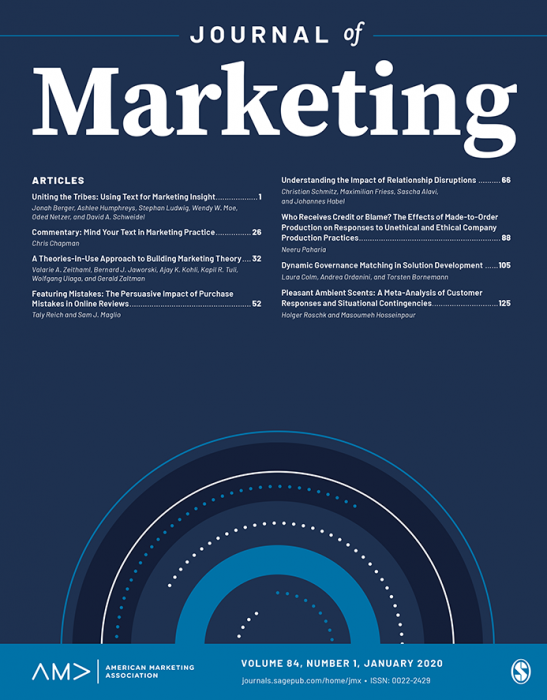EXPRESS: Curating the Crowd: How Firms Manage Social Fit to Stage Social Atmospheres
IF 10.4
1区 管理学
Q1 BUSINESS
引用次数: 0
Abstract
In sectors across the experience economy—from live sports to festivals, nightlife entertainment, private members’ clubs, and invite-only events—firms compete by staging social atmospheres. When firms successfully stage social atmospheres, they benefit from enhanced customer experiences, loyalty, and place attachment. However, social atmospheres often fail when firms struggle to bring together the ‘optimal mix’ of customers. Yet marketing research offers limited insight into how firms can attract and select heterogeneous customers who fit together productively to create meaningful shared experiences of place. Accordingly, this article draws on aesthetic work literature to conceptualize《策划人群:企业如何管理社交契合度来营造社交氛围》
在体验经济的各个领域——从现场体育到节日、夜生活娱乐、私人会员俱乐部和仅限受邀者参加的活动——公司通过营造社交氛围来竞争。当企业成功地营造社交氛围时,他们会从增强的客户体验、忠诚度和地方依恋中受益。然而,当公司努力将客户的“最佳组合”聚集在一起时,社交氛围往往会失败。然而,对于企业如何吸引和选择不同类型的客户,让他们有效地结合在一起,创造有意义的共享体验,市场研究提供的见解有限。因此,本文借鉴美学工作文献来概念化社会氛围策展——企业通过管理客户异质性来实现社会契合的过程,作为一种营造社会氛围的手段。本文通过对柏林标志性电子音乐俱乐部场景的民族志研究,揭示了一个三阶段的社会氛围策展模型,包括培养、选择和神秘化的策展机制。本研究促进行销学者对社会氛围、顾客异质性、市场包容与排斥的理解。通过概述与每种策展机制相关的管理任务,本研究为不同服务背景下的管理者提供了可操作的指导,指导他们如何策展合适的人群来精心营造社交氛围。
本文章由计算机程序翻译,如有差异,请以英文原文为准。
求助全文
约1分钟内获得全文
求助全文
来源期刊

Journal of Marketing
BUSINESS-
CiteScore
24.10
自引率
5.40%
发文量
49
期刊介绍:
Founded in 1936,the Journal of Marketing (JM) serves as a premier outlet for substantive research in marketing. JM is dedicated to developing and disseminating knowledge about real-world marketing questions, catering to scholars, educators, managers, policy makers, consumers, and other global societal stakeholders. Over the years,JM has played a crucial role in shaping the content and boundaries of the marketing discipline.
 求助内容:
求助内容: 应助结果提醒方式:
应助结果提醒方式:


